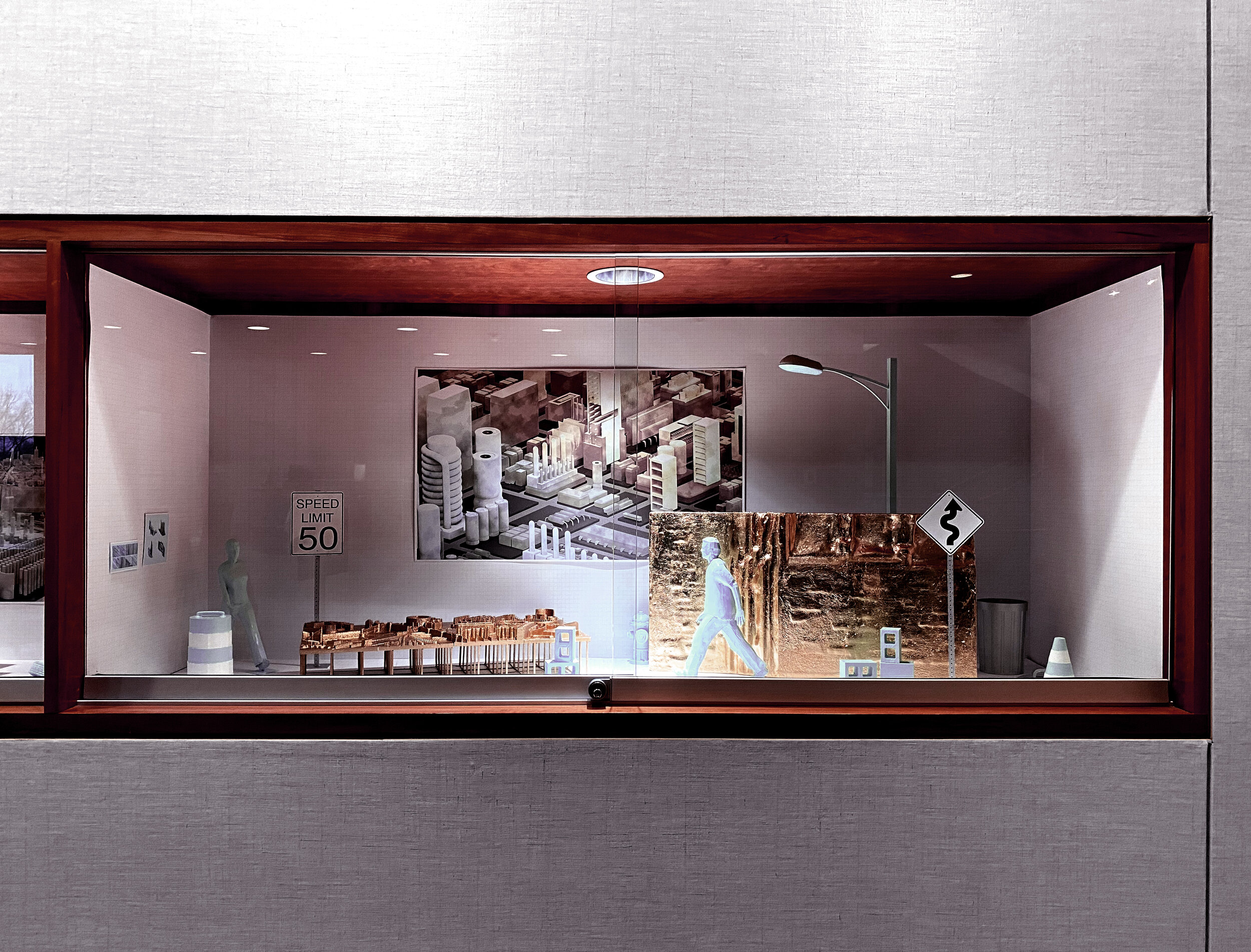Diorama of Autonomous City III
Exhibition in Farrell Teaching & Learning Center Exhibition Space, School of Medicine, Washington University in St. Louis, St. Louis, MO, March, 2021
Dioramas are interiors that aspire to be images. A diorama may be a composite of a painting, a building, a built-in, a model, a room, or an accumulation of like or disparate things. Neither scale, nor size, nor the mechanism of the apparatus defines something as a diorama. The common thread is in the unsettling of the relationship between the frame and screen and the unusual conditions of flatness produced in their detachment.
from Constance Vale’s paper, “The Scene of the Crime: Imaging the Interior,” 2018
This diorama is a prototype for a 1:8 scale model in an interdisciplinary endeavor between researchers in computer science and architecture. The autonomous driving platform will be used as (1)to speculate on how architecture and the urban environment can change relative to the wide use of autonomous vehicles and (2) to improve the performance of autonomous vehicles through adversarial testing with a miniature autonomous vehicle. The model studies include photogrammetry fragments of facades on Washington University in St. Louis’ campus as well as fragments of other real and speculative cities and street entourage.
Like Eugene R. Kupjack’s dioramas — an extensive collection made for Narcissa Niblack Thorne, housed in Thorne’s Minature Rooms housed at the Art Institute of Chicago — this exhibition features models that are set into the wall. They are both built-in cabinets full of things and framed pictures. The walls of the 1-½” = 1’ model imply an interior with drawings or views of a remote city, complicating the real and blurring what might be read as a window to the world or viewed as an applique painted in the guise of an exterior atmosphere and environment. The real is further thrown into question by the full-scale wall in which the diorama is immured. In turn, the frame is not only the literal oak boundary that surrounds the model, but it is also defined by the wood framing of the full-scale wall. Everything accumulated in the diorama’s interior is linked to the exterior in the image, throwing scale into question through its staging.







